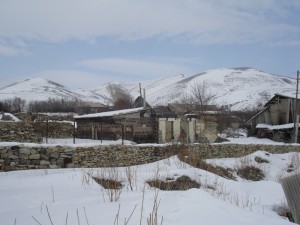…I have changed very much and I felt it when I was still participating in the classes-my character and way of thinking changed. Previously I used to “label” people a lot and provoke conflicts out of nothing, but now I don’t do tha anymore. In my opinion acquired knowledge is very important, especially in terms of makeing proper decisions and helping other people, should it be necessary. Before that peace was not very important to me. Then I realized that there is nothing more important in this world than peace…”, – Angelika Simonyan, School #2
During the past years, several local and international organizations, in partnership with the national Institute of Education of the RA Ministry of Education and Science, have been working on integration of the ideas of peace, conflict resolution and tolerance in the curriculum of schools.The purpose is clear for everyone. Today, more than ever, it is necessary to educate citizens who are able to protect their rights and respect the rights of others and who are able to resolve the conflicts in peaceful way and be tolerant. “Women for Development” NGO was among the first organizations to initiate such education in Armenia. In 2002 we started the implementation of the “Peace and Conflict Peaceful Resolution Education in Schools of Armenia” project. The main objective of the project was formation of the ideas of peace culture and conflict resolution among teachers and schoolchildren. In frames of the project, Peace Education Centers were established in 16 schools of Shirak province and Gyumri State Pedagogical Institute. The classes in the Centers were being conducted based on the methodological handbook, which was developed by the specialists from the NationalInstitute of Education as well as WFD.
In 2002-2010:
- – More than 1000 schoolchildren from 5-10thgrades and 150 students from the PedagogicalInstitute were educated.
- – Peer-to-peer education was implemented for 3500 schoolchildren in 18 schools and among more than 500 future teachers.
- – Approximately 550 teachers from more than 80 schools of Shirak, Lori and Aragatsotnprovinces were trained.
- – Seminars were organized for more than 3200 parents.
- – Research was conducted with the goal of assessing the impact of peace education on the schoolchildren after several years.

The results of the abovementioned research showed that those schoolchildren, who took the PeaceEducation course, possess sufficient skills and knowledge in conflict analysis and identification of the causes of the conflict, as well as communication and methods of conflict resolution.
They have gained values, such as:
- – Respect towards history and culture of various nations;
- – Understanding that each person is a bearer of peace culture;
- – Confidence;
- – Ability to protect own rights and to understand own responsibilities, etc.
According to the teachers and parents, the schoolchildren participating in the program have become tolerant of each other, the conflict situations have decreased, the conflicts that have arisen are mainly resolved peacefully, without insulting human dignity.
In 2011-2013:
“Peace and Conflict Resolution in Schools” project was implemented in 360schools of 11 Armenian provinces, reaching out to more than 2100 teachers/class heads and approximately 40000 pupils of 6-9thforms. At this stage the main goal of the project was to create peaceful environment in schools of Armenia, thus contributing to decreasing the number of conflict situations with violent outcomes.

With the goal of evaluating the project progress, WFD specialists analyzed and compared the results of pre and post tests, conducted among 4117 schoolchildren from 71 schools of 11 provinces of Armenia. The results of this research proved that the cases of school conflicts with violent outcomes decreased by 72%, cases of verbal violence decreased by 67%, and the cases of indirect violence decreased by 50%.
Teachers involved in the project, mention:
- – Once peace lessons were initiated during the class heads’ hours, they have become the most awaited and most pleasant classes for the pupils.
- – Conflict resolution topics initiate high interest especially among the schoolchildren with low grades and those with “bad behavior”.
- – Pupils who usually did not participate in class discussions, started to take part in them, express their own opinions, make comments and recommendations.
- – The course helps develop analytical thinking among children.
- – Positive changes are being observed not only in terms of the pupils’ behavior, but also their academic progress.
- – Apologizing became easier even for the most conflicting children.
- – The project contributes to improvement of pupil-parent-teacher relationships.
- – There are numerous examples, when the pupils were able to independently manage and resolve everyday conflicts, without intervention of their teachers, parents or friends, etc.
The project is being implemented in the provinces with the support of the provincial branches of the National Institute of Education and their specialists.







